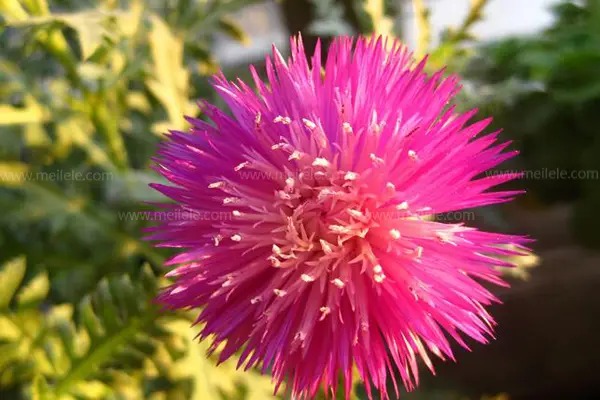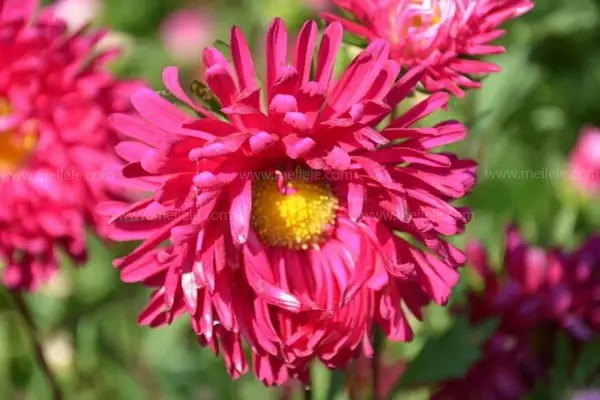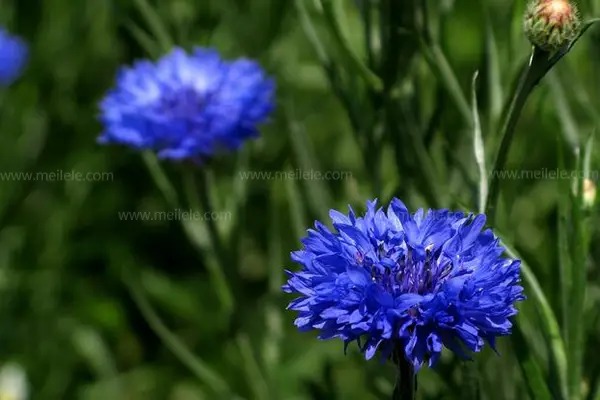Detailed explanation of cornflower cultivation techniques!
The hometown of cornflower is in Europe. It was originally a wild flower. After years of cultivation, it has become less "wild", the flowers have become larger, and the colors have become more diverse. There are purple, blue, light red, white and other varieties, among which purple and blue are the most precious. It can be found everywhere on the hillsides, fields, waterside, roadside, in front of and behind houses in Germany. It is regarded as the national flower of Germany. Today, I will briefly introduce the cultivation technology of cornflower. 
Cultivation technology of cornflower
Cornflower likes plenty of sunshine, cool climate, avoid hot summer, and fertile and loose soil. Because of taproot, it is suitable for direct seeding. Autumn sowing is for early flowering, and it can overwinter in a cold bed and bloom in late spring. Because cornflower is not tolerant to transplantation, it must be transplanted with soil balls, otherwise it is not easy to slow down the seedlings. After planting and surviving, apply 5 times the water of decomposed human feces and urine once every 10 days or a month, and stop fertilizing in March of the second year to wait for flowering.
If cornflowers are cultivated in pots, the pot soil should be loose and fertile. It is best to use garden soil, rotten leaves, plant ash, etc. to mix the soil. When the seedlings have 6-7 leaves, the first transplant is carried out. In the future, at least three tube pots should be changed, because cornflowers have a taproot system and large seedlings are not resistant to transplanting. In winter, they can be buried in the soil for winter and taken out in early March. Fertilization should be frequent and stop when the buds appear.
Cornflowers are cold-resistant and can be planted in the open field in East China. They need to be covered in North China to survive the winter. They like fertile and loose soil, like sufficient sunlight, and can self-sow. They are highly adaptable and easy to cultivate. When cultivated as cut flowers, greenhouses are usually used to promote flowering. Sowing in August, planting in September, and producing flowers in February of the following year. In the warm lands of the interior of the country, sowing is generally done in August and September, and the open field is covered for wintering. Planting in the early spring of the second year, and flowering in early summer. Sowing in 
the greenhouse in the Northeast in spring. Since cornflowers have taproots and few lateral roots, they must be transplanted with soil when they are small seedlings. Large seedlings are not easy to survive, so they are often sown directly in spring. Cornflowers can also be self-seeded and propagated. In addition, cornflowers like dense planting, otherwise they will grow poorly. Cornflowers have rich colors and unique flower shapes, making them good materials for ground planting, potted plants and cut flowers . In order to extend the flowering period of cornflowers, in addition to autumn sowing, spring sowing and summer sowing can also be used. If sown in April-May, it will bloom in July-October of the same year.
Wait until July to sow seeds that mature that year. Generally, it will bloom after September. If cornflowers are cultivated in the open field, they can last until the frost. In mid-to-late October, transplant the ground-planted plants into flower pots for indoor wintering, or sow directly in pots in August and bring them indoors before winter. In winter, as long as the room temperature is kept at 8-15℃, water appropriately and apply a small amount of thin compound fertilizer , and place them in a sunny place, cornflowers can also bloom. This method of sowing in stages and batches can effectively extend the flowering period of cornflowers. 
Precautions for cornflower cultivation:
The stems of cornflowers are thin and weak, and they are easy to fall over, so the planting distance should not be too dense to prevent over-dense growth and poor ventilation from causing lodging. In the seedling stage, the topping and pinching are required to promote more branches and dwarf the plants, so that there are more flowers and the plant shape is also beautiful. Apply liquid fertilizer once every 20 days during the growing season, but be careful not to apply too much nitrogen fertilizer. Apply more phosphorus and potassium fertilizers to make the stems firm and the flowers bright. At the same time, watering should be appropriate, not too much. Be sure to pay attention to timely drainage during the rainy season, otherwise it will cause root rot and affect the normal growth of the plant.